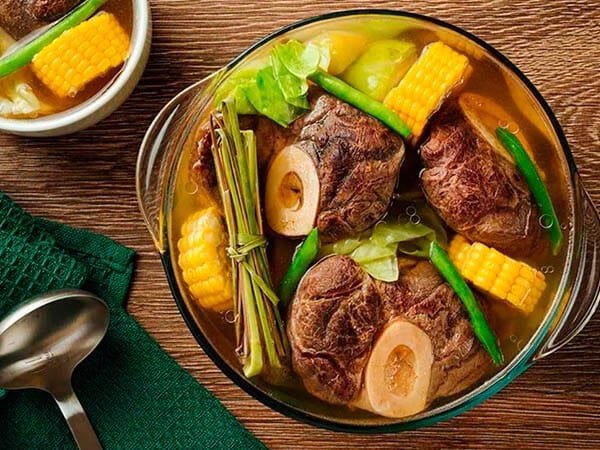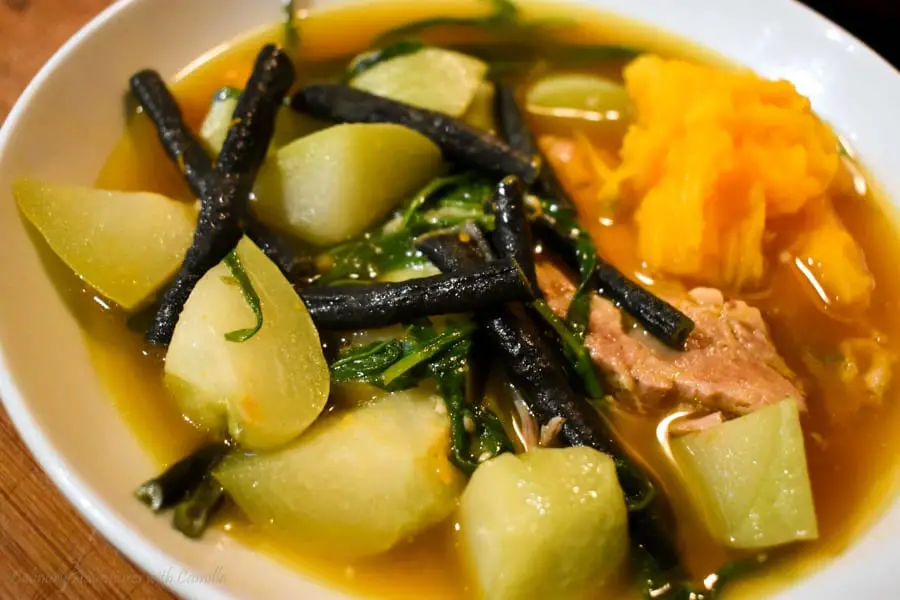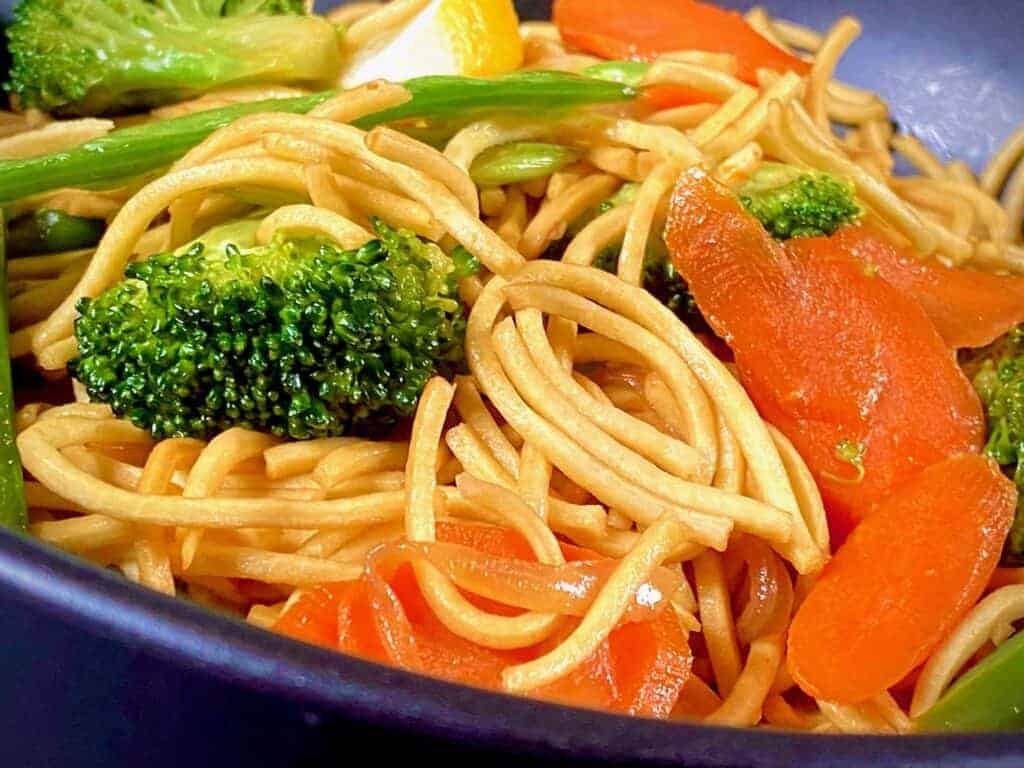Impress Guests with These Filipino Food Recipes.
Check Out the Rich Preference of Filipino Food With These Must-Try Recipes
Filipino cuisine provides a remarkable tapestry of tastes that show the country's abundant cultural heritage. Each dish informs a story, from the mouthwatering deepness of Adobo to the revitalizing flavor of Sinigang, inviting culinary lovers to explore a varied range of tastes.
Adobo: The Legendary Meal
Adobo has emerged as the quintessential dish of Filipino cuisine, exciting tastes buds both locally and abroad. This cherished meal is characterized by its one-of-a-kind mix of mouthwatering, sour, and somewhat sweet tastes, accomplished with a precise marination procedure. Commonly, adobo is prepared using chicken or pork, although variants exist that include seafood and vegetables.
The basic active ingredients of adobo consist of soy sauce, vinegar, garlic, bay leaves, and black pepper, which together produce an abundant and fragrant sauce. The cooking approach usually includes simmering the meat in the sauce, allowing it to absorb the facility tastes while softening. This procedure not only enhances the taste but additionally offers as an all-natural chemical, making adobo a suitable recipe for storage.
Adobo is typically served with fit to be tied rice, which complements its robust taste account. Whether enjoyed at home or in restaurants, adobo stays a staple that symbolizes the essence of Filipino hospitality, making it a must-try for any person discovering this vivid food.

Sinigang: A Tangy Pleasure
Another foundation of Filipino food is sinigang, a meal celebrated for its unique tangy taste. This mouthwatering soup is commonly made with a range of meats, consisting of pork, beef, shrimp, or fish, and is characterized by its sour brew, which normally originates from tamarind, environment-friendly mango, or calamansi. The balance of acidity and umami produces a rejuvenating comparison that is both comforting and stimulating.
Sinigang is often enriched with a selection of fresh veggies such as radish, eggplant, water spinach, and string beans, adding not only to the meal's taste account but likewise to its dietary worth - Filipino food recipes. Each family members might have its very own version, with regional variants that mirror regional active ingredients and cultural influences
The prep work of sinigang entails simmering the picked meat till tender, followed by the enhancement of the souring agent and vegetables. This method allows the flavors to combine wonderfully, resulting in a hearty and satisfying dish. Traditionally served with steamed rice, sinigang embodies the essence of Filipino friendliness and is a cherished staple, often enjoyed during family members celebrations and special events.
Lechon: The Joyful Roast
Lechon, typically considered as the centerpiece of joyful Filipino parties, is a delicious roasted pig known for its crunchy skin and tender, delicious meat. This iconic recipe is deeply rooted in Filipino society, commonly enhancing tables throughout birthday celebrations, wedding celebrations, and significant vacations. The preparation of lechon is an art form, calling for careful focus to information, from marinating the pig with a mix of seasonings to making sure an even roast over an open flame or in a specialized stove.
Commonly, the pig is experienced with a mixture of salt, pepper, and neighborhood herbs, passing on an abundant flavor that complements its all-natural juiciness. The cooking procedure can take numerous hours, during which the skin changes into a perfectly crunchy layer, producing a delightful comparison to the succulent meat underneath.
Lechon is traditionally served with a side of liver sauce or vinegar dip, improving its savory account. It is not just a dish but a common experience, as families and close friends gather around to appreciate this luxurious dish. The scent of lechon floating through the air is an invite to delight, making it a beloved sign of party in Filipino culture.
Kare-Kare: Oxtail Stew
Kare-Kare, an abundant and passionate oxtail stew, holds a special area in Filipino culinary custom, celebrated for its unique flavor account and vibrant presentation (Filipino food recipes). This dish is identified by its luscious peanut sauce, which is produced by grinding baked peanuts or using peanut butter, providing it a creamy and nutty essence. Commonly, kare-kare features tender oxtail, although variations might consist of tripe or beef shank, each adding to the stew's depth of flavor
The try these out prep work of kare-kare normally involves slow-cooking the meat up until it comes to be incredibly tender. The enhancement of a range of veggies, such as eggplant, string beans, and banana hearts, not just boosts the stew's nutritional value but additionally its aesthetic appeal. Served with a side of bagoong, or fermented shrimp paste, kare-kare wonderfully balances its rich, savory notes with a salty kick.
Commonly appreciated throughout unique celebrations and family gatherings, kare-kare embodies the essence of public eating in Filipino society. Its fascinating intricacy and calming heat make it a meal that is not only satisfying to the palate but also stimulates a feeling of fond memories for several Filipinos around the globe.

Halo-Halo: A Sugary Food Treat
Halo-halo is commonly considered the perfect Filipino dessert, commemorated for its lively mix of structures and tastes - Filipino food recipes. This fascinating mixture is a perfect depiction of the Philippines' abundant culinary heritage, incorporating different active ingredients that collaborate to develop a refreshing and indulgent treat, especially during warm weather
At its core, halo-halo functions smashed ice covered with a variety of active ingredients, including sweetened beans, jellies, fruits like bananas and jackfruit, and creamy leche flan. A charitable inside story of ube (purple yam) ice lotion crowns the mixture, including a rich, luscious taste that elevates the dessert. The layering of active ingredients not just produces a banquet for the eyes yet also offers an intricate interaction of sweetness and structure in every dose.
Commonly served in a glass, halo-halo encourages restaurants to mix the components prior to Website appreciating. This common facet enhances the dessert's appeal, as each person's version can be distinctively customized. Whether delighted in as a street food indulgence or a special occasion reward, halo-halo remains a cherished sign look these up of Filipino culture, inviting everyone to discover its wonderful and diverse flavors.
Conclusion
